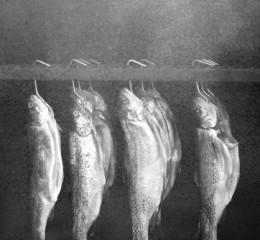


The salmon is the most farmed aquatic animal (apart from the shrimp) as well as the most eaten. It is said that Neanderthal Man ate salmon some 200,000 years ago. The Gauls and the Romans constructed ponds in which to conserve the salmon caught in rivers for as long as possible. The fish was already especially appreciated when served on the tables of the French Kings, such as Charles V (1338 – 1380).
In the 14th century, in the celebrated collection of mediaeval cuisine by Guillaume Tirel (known as Taillevent), there were salmon recipes requiring it to be cooked or smoked. The mediaeval lords controlled the fishing and shooting on their own lands. But, with the French Revolution, these privileges ceased and the exploitation of river resources became still more important. This was particularly true when nets were installed during the Atlantic salmon migrations. Even if protective legislation was reintroduced under the French Empire, and the 2nd and 3rd Republics, large-scale salmon fishing made the population of wild salmon considerably shrink.
The situation of different species varies. The Atlantic salmon has disappeared from most European rivers. The most important element of world salmon consumption today is the fish farm (essentially Norwegian). The situation is very different for the Pacific salmon: the numbers of Royal, Red, Silver, Pink and Keta salmon are still substantial, largely thanks to a policy of fairly strict quotas.